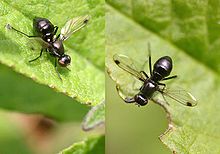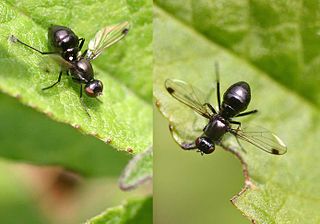
The Sepsidae are a family of flies, commonly called the black scavenger flies or ensign flies. Over 300 species are described worldwide. They are usually found around dung or decaying plant and animal material. Many species resemble ants, having a "waist" and glossy black body. Many Sepsidae have a curious wing-waving habit made more apparent by dark patches at the wing end.

The Ulidiidae or picture-winged flies are a large and diverse cosmopolitan family of flies (Diptera), and as in related families, most species are herbivorous or detritivorous. They are often known as picture-winged flies, along with members of other families in the superfamily Tephritoidea that have patterns of bands or spots on the wings. Some species share with the Tephritidae an unusual elongated posteroapical projection of the anal cell in the wing, but can be differentiated by the smoothly curving subcostal vein. Two species, Tetanops myopaeformis and Euxesta stigmatias, are agricultural pests.

The genus Scathophaga are small to medium sized predatory flies that for the most part, have larvae that feed on other insect larva within animal dung or decaying vegetable matter. Many are highly variable, sometimes producing small, infertile males that superficially resemble females. This species is an example of an organism which may selectively store the sperm of multiple males, as females have three to four spermathecae.
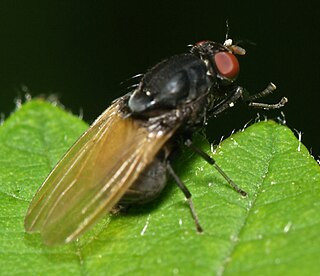
Minettia is a genus of small flies of the family Lauxaniidae. They have almost worldwide distribution, is one of the most species rich genera of the family with more than 120 described species. The Palaearctic is the most diverse with some 56 described species. The genus is divided into 3 subgenera.
Sepsis biflexuosa is a Cosmopolitan species of fly and member of the family Sepsidae.

Sepsis violacea is a European species of flies and member of the family Sepsidae.

Themira annulipes is a European species of fly and member of the family Sepsidae.
Sepsis flavimana is a European species of flies and member of the family Sepsidae.
Sepsis nigripes is a European species of flies and member of the family Sepsidae.
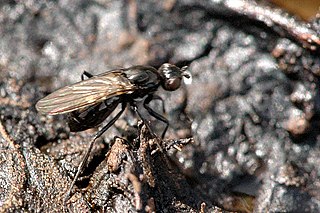
Themira is a genus of flies in the family Sepsidae.

Saltella is a genus of flies in the family Sepsidae.

Crumomyia is a genus of flies belonging to the family lesser dung flies (Sphaeroceridae).

Limosina is a genus of flies belonging to the family Lesser Dung flies.

Cordilura is a genus of dung flies in the family Scathophagidae. There are more than 90 described species in Cordilura.
Dicranosepsis is a genus of flies in the family Sepsidae.
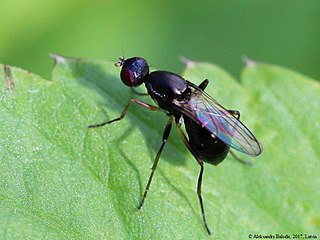
Meroplius is a genus of flies in the family Sepsidae.
Perochaeta is a genus of flies in the family Sepsidae.

Cephaliini is a tribe of picture-winged flies in the family Ulidiidae.
